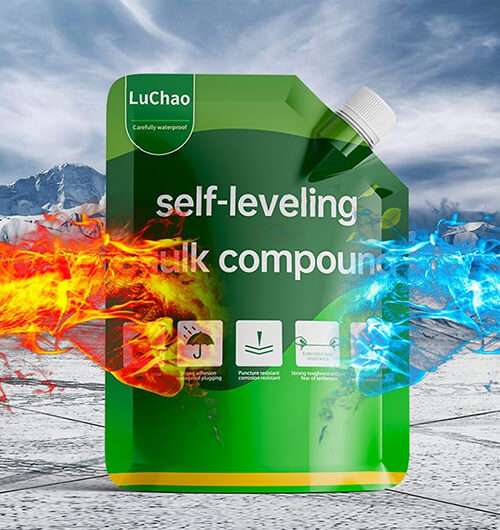Epoxy vs. Acrylic Adhesives – Which One Is Right for Your Project?
Epoxy and acrylic adhesives are the two widely used alternatives for professional and DIY use. The two form good relationships and work differently, and are applicable to different situations.
Knowledge of the differences between these adhesives enables the avoidance of costly errors. Making the wrong decision may result in failure of bonds, the use of wasted materials, and delays in realizing the projects. This blog compares epoxy and acrylic adhesives to help identify the best choice for specific needs.
Getting to know about Epoxy Adhesives
Epoxy adhesives consist of two components: resin and hardener. A combination of these elements results in a curing process. The response converts fluid substances into firm, hard connections.
The curing process forms cross-linked chains of polymer. These chemical bonds are outstanding in terms of strength and chemical durability. Epoxy bonds are almost irreparable once they have healed.
Epoxy adhesives are available in various formulations for different applications. Some are fast-cured, while others can be given as much working time as the illness allows. Specialty epoxies are used in high-temperature, underwater, or flexible substrates.
The Significant Properties of Epoxy
- The bond strength of epoxy is very high. The bonding glue may even be tougher than the components being attached. This is the strength that makes epoxy suitable for structural applications, where maximum reliability is required.
- One of the best qualities of epoxy is its chemical resistance. Epoxy resists oils and most corrosive materials. This is what renders epoxy an appropriate choice to use in rough industry conditions.
- The formulation has temperature tolerance, but it is usually superior to acrylic adhesives. Ordinary epoxies can withstand temperatures of up to 120 °C, although there are engineered types that can endure significantly higher temperatures. This stability will be applicable in applications with extreme temperature variations.
- Epoxy needs to be prepared well on the surface to achieve its best effects. The surfaces should be clean, dry, and frequently rough. Maximal bond strength and durability are guaranteed by proper preparation.
Learning Acrylic Adhesives
Two-part systems are also employed in acrylic adhesives. The chemistry, however, is significantly different from that of epoxy. The curing mechanism of acrylic adhesives varies by type.
Epoxies have the same modern-day strength as structural acrylic adhesives. Adjusted acrylic preparations give strength and elasticity. These properties have enabled acrylics to be flexible in various bonding scenarios.
One-part acrylic adhesives cure under UV light or in air. Two-part acrylics incorporate components immediately before application. The diversity of curing resources offers the option of various application techniques.
The main properties of Acrylic
- Acrylic adhesives endure imperfect surface preparation. They successfully attach to greasy or polluted surfaces. Such forgiveness makes it easy to apply and speeds up the preparation process.
- One of the acrylic benefits is its fast curing time. A large number of formulations have achieved handling strength in minutes. Quick curing helps to hasten production and shortens the time spent on fixtures.
- Acrylic adhesives offer an advantage in terms of impact resistance, shock absorption, and vibration resistance. The minor plasticity takes up the impulse forces without breaking. The application of this property is beneficial to the automotive and electronics industries.
- Acrylic adhesives are usually less expensive than epoxies of a similar kind. The affordability of acrylics makes it a promising material for large-volume production. The savings in costs are multiplied by the reduction in surface preparation needs.
Comparing Bond Strength
Top-level strength capabilities.
Epoxy adhesives typically offer superior ultimate tensile strength. Epoxy bonds perform with laboratory results of 3000 to 4000 psi. This is a powerful product, well-suited for important structural applications.
Acrylic adhesives have a strength of 2000 to 3500 psi. This is slightly less than epoxy; however, this amount of strength is most effective in most applications. The distinction is most important in cases of extreme load-bearing.
Long-Term Durability
Epoxy also does not weaken over time under continuous pressure. The cured structure is rigid and is resistant to creep and fatigue. When used well, epoxy bonds can last for decades.
Acrylic adhesives are also durable and long-lasting. The relative flexibility enables bonds to withstand repetitive stress cycles. Acrylic bonds may not crack under dynamic loads, unlike epoxy, which can crack.
Surface preparation Requirements
Epoxy Preparation Needs
Surface preparation for epoxy requires great care. Surfaces must be well cleaned. Oils, dust, and moisture prevent proper adhesion.
Mechanical surface roughening has been beneficial in many epoxy applications. Sanding or abrading makes miniature-sized mountains and valleys. These surface defects promote mechanical interlocking, thereby increasing bond strength.
Acrylic Preparation Needs
Acrylic adhesives can be used with little surface preparation. Adequate bonding can often be achieved with simple cleaning. The formulations can withstand light oil films and low-level contamination.
The tolerance of this preparation accelerates the production. The production processes are time and cost-saving. The simplified process limits the chances of application errors.
Application Techniques
Working with Epoxy
Epoxy lacks tolerance when mixing both resin and hardener. Failure to provide the correct ratios undermines bond strength and curing. The use of automatic dispensing equipment consistently mixes production environments.
Pot life restricts the duration for which the mixed epoxy remains usable. Pot life requires avoiding partially cured adhesive. Planning helps use mixed adhesive before its use has to stop.
Working with Acrylic
Special dispensing equipment is commonly used with acrylic adhesives. Some formulations need one surface activator or primer. Knowledge of the specific system helps avoid application errors.
Many acrylics cure quickly, requiring rapid work. Before the curing process, the components' positioning must be precise and accurate. Experience with rapid-curing glues enhances their use.
Making the Right Choice
When to Choose Epoxy
Choose epoxy when maximum bond strength is required. Epoxy has high strength that is useful in critical structural applications. Epoxy is reliable for the safety-critical bonds.
Situations involving chemical exposure favor epoxy adhesives. There is resistance to epoxy, which is needed in industrial settings where solvents and fuels are used. The benefits of epoxy are evaluated through long-term tests on chemical exposure.
When to Choose Acrylic
Select acrylic when quick assembly is needed. Fast curing is an advantage in production environments. Acrylic adhesives are suitable for quick turnaround projects.
Acrylic works better on hard-to-clean surfaces. Contaminated surfaces and oily metals have a good bond with acrylics. Less preparation saves time and money.
Epoxy AB Adhesive
-
Strength: Extremely strong and durable bonds.
-
Finish: Available in transparent, black, and white options.
-
Best Use: Automotive repairs, metal bonding, stone setting, heavy-duty woodwork.
-
Curing Time: Slightly longer but results in superior structural integrity.
Acrylic AB Adhesive
-
Strength: Strong, but with more flexibility than epoxy.
-
Finish: Slightly less rigid, faster bonding.
-
Best Use: Lightweight applications, plastics, rapid assembly lines.
-
Curing Time: Quick-setting; ideal for speed-focused tasks.
When to Use Which?
Conclusion
Both epoxy and acrylic AB adhesives serve unique functions in different industrial contexts. At Jinhua Luchao, we offer tailored formulations to match your specific requirements. Contact us today to find out which solution fits your project best!


